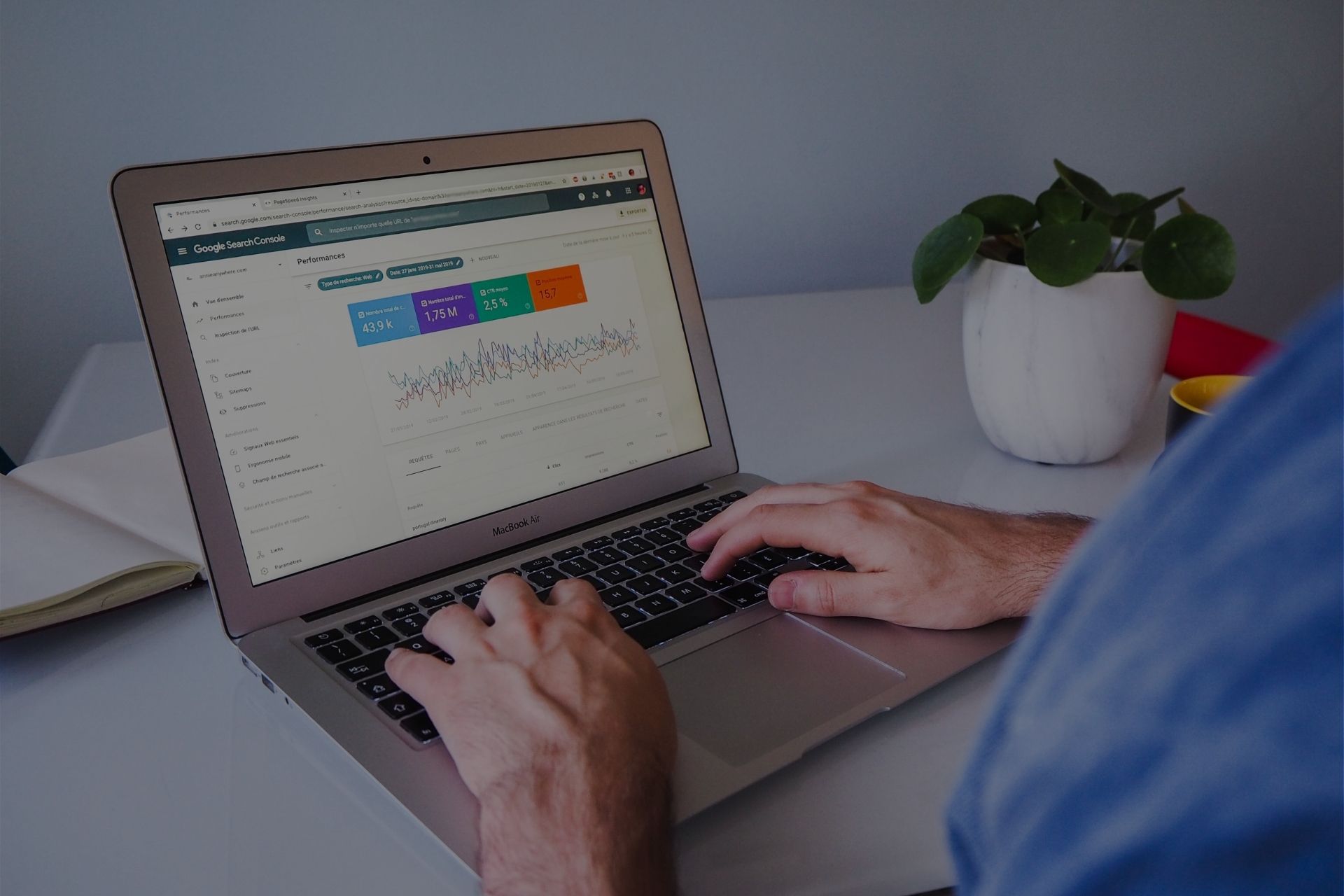
In the dynamic landscape of digital marketing, the intricacies of search engine optimization(SEO) demand constant attention and strategic adaptation. One pivotal element that often requires a careful balancing act is pagination. Understanding the nuances of Pagination SEOis essential in today's competitive online sphere, where visibility and ranking can make or break a digital presence.
Pagination, the art of dividing contentacross multiple pages, is a powerful organizational tool, yet its implementation can significantly impact a website's SEO. In this exploration, we unravel the complexities of Pagination SEO, delving into key strategies and best practices to ensure that your content not only engages users but alsDaeDaeo ranks prominently in search engineresults.
What Is Pagination In SEO?
Pagination stands as a crucial web design strategy aimed at improving user interaction with lengthy content by breaking it down into more manageable segments spread across multiple pages. This technique serves as a navigational aid, facilitating users in accessing and browsing content with ease. While pagination is widely employed across various types of websites, its primary objectives include organizing category pages on ecommercesites, structuring lists of content on news sites or blogs, and dividing lengthy forum threads.
- Ecommerce Category Pages -Pagination is extensively utilized in ecommerce settings to paginate category pages, ensuring that users can explore products systematically without overwhelming scroll lengths.
- News Sites and Blogs-Content-heavy platforms such as news websites and blogs frequently implement pagination to present articles in a reader-friendly manner, allowing users to access information in digestible portions.
- Forum Threads-Discussion forums often adopt pagination to compartmentalize lengthy threads, simplifying the navigation for users looking to engage with specific parts of the conversation.
Even the Google Search Engine Results Pages (SERP) employs pagination to organize and present information. This practice aids users in scanning search results more efficiently, though it's a safe bet that most users seldom venture far beyond the first page.
The decision to paginate content arises from the desire to provide users with a clear hierarchyof information and a sense of conclusion in their search journey. The division into separate pages not only enhances navigability but also suggests a structured endpoint to users, aiding in a more satisfying user experience.
How Does Pagination Affect SEO?
When it comes to web design and content organization, pagination emerges as a powerful tool that can significantly influence a website's search engine optimization (SEO). Properly implemented, pagination not only enhances a site's usability but also plays a pivotal role in determining the visibility of crucial content in search engine results.
Let's delve deeper into the factors that make pagination a key player in the intricate dance between user experience and search engine rankings.
Website Usability
- Behavioral Factors -Search engines gauge the quality of content by analyzing user behavior, and one crucial metric is the time users spend on a site. Effective pagination, making it seamless for users to navigate between pages, contributes to increased user engagement and prolonged site visits.
- Navigation - Pagination serves as a navigational aid, allowing users to swiftly locate desired information. The structured presentation of paginated content provides users with a clear understanding of the site's layout, enabling them to reach their destination with minimal effort.
- Page Experience - Google, a prominent player in the search engine realm, emphasizes the importance of page experience as a ranking signal. Pagination, by facilitating faster page loading and optimizing backend performance, aligns with Google's criteria for a positive page experience.
Crawling And Indexing
- Unique Content -Ensuring that each page's content is unique is paramount for SEO. While crawlers perceive paginated pages as separate URLs, the challenge lies in maintaining content distinctiveness. Similar or identical content across paginated pages can pose indexing issues, requiring webmasters to carefully manage content variations.
- Crawling Budget -Search engine bots operate within a predefined crawling budget, determining the number of pages they can explore during a single visit. The proliferation of paginated content can potentially divert a significant portion of the crawling budget, delaying the indexing of important content or, in extreme cases, leading to non-indexation.
Pagination Vs. Infinite Scroll
Infinite scroll, as the antithesis of pagination, presents an alternative approach where all content resides on a single page, allowing users to continuously scroll through until they've consumed all available information. This design is occasionally segmented by sections, accessible through a "load more" button, preserving the illusion of a single-page structure.
While infinite scroll undoubtedly contributes to an aesthetically pleasing and engaging browsing experience, its SEO implications raise noteworthy concerns. Despite its popularity for creating visually seamless and mobile-friendly websites, the inability of search engines, such as Googlebot, to emulate scrolling behavior or interact with the "load more" functionality hinders their ability to effectively crawl and index all content on an infinite scroll page.
Furthermore, the crawl budgetallocated to search engine bots is not infinite. Instead of exhaustively navigating an entire infinite scroll page, crawlers may opt for a snapshot approach, capturing a portion of the content but not the entirety. This limitation poses a significant drawback, as the full breadth of content may not be comprehensively indexed, thereby missing out on a valuable opportunity to enhance visibility.
In stark contrast, pagination provides a more SEO-friendly alternative. Each paginated page is treated as a separate entity by search engine crawlers, allowing for systematic crawling and indexing similar to other content structures. This distinction ensures that search engines efficiently process and rank each paginated section without sacrificing the integrity of the website's content.
Advantages Of Pagination SEO
Pagination in SEO offers several advantages that contribute to a positive impact on user experience and search engine optimization. Here are the key advantages of implementing Pagination SEO:
- Improved User Experience -Pagination helps organize and structure content, making it more digestible for users. Instead of overwhelming users with long-scrolling pages, pagination provides a clear hierarchy and allows users to navigate through content more efficiently. This enhanced user experience contributes to increased engagement and satisfaction.
- Enhanced Page Load Speed -Paginated content often leads to faster page load times. By loading a limited amount of content on each page, rather than all at once, websites employing pagination can optimize load speeds. This is crucial for retaining user interest and is also considered a positive signal by search engines, as faster-loading pages contribute to a better overall user experience.
- Facilitates Better Crawlability -Search engine crawlers can easily navigate and index paginated content. Properly implemented pagination, with the use of rel="next" and rel="prev" attributes, provides clear signals to search engines about the sequential relationship between pages. This ensures that search engines efficiently crawl and index all relevant content, contributing to improved visibility in search results.
- Supports Site Structure and Organization -Pagination is particularly beneficial for websites with extensive content, such as e-commerceplatforms or news websites. It allows for a logical and organized structure, helping users and search engines alike understand the categorization and hierarchy of the content. This structured approach contributes to a more coherent site architecture.
- Multiple Indexing Opportunities - Each paginated page represents a unique URL, providing additional opportunities for indexing. This can be advantageous for SEO as search engines can index and rank individual pages separately. It diversifies the entry points for users and search engines, potentially leading to better visibility for specific content.
- Adherence to SEO Best Practices -Properly implementing pagination aligns with SEO best practices. It ensures that content is accessible, well-organized, and optimized for search engines. Adhering to guidelines such as using canonical tags and avoiding duplicate content issues further reinforces the positive impact of pagination on SEO.
- Mobile-Friendly Design -Pagination can be tailored for responsive and mobile-friendly design, catering to the growing number of users accessing websites from mobile devices. A seamless mobile experience is valued by both users and search engines, positively influencing rankings.
- Granular Analytics Insights -Paginated content allows for more granular tracking of user behavior. Analyzing user interactions on individual pages provides valuable insights into which sections of the content are most engaging. This data can inform content optimizationand marketing strategies.
Disadvantages Of Pagination SEO
While Pagination SEO offers several advantages, it also comes with its share of disadvantages that webmasters and SEO practitioners need to consider. Here are some key disadvantages associated with Pagination SEO:
- Potential for Thin Content -Paginated content may lead to thin content issues, especially if each page contains only a limited amount of information. This can impact the perceived value of individual pages and may be a concern for search engines looking for substantial and unique content.
- Duplicate Content Challenges -Pagination can introduce challenges related to duplicate content. Similar or identical content across paginated pages may confuse search engines and result in indexing issues. Managing duplicate content effectively becomes crucial to avoid SEO pitfalls.
- Crawling Budget Allocation -Search engine bots operate within a predefined crawling budget during each site visit. If a significant portion of this budget is consumed by crawling paginated pages, it may lead to delayed indexing of other important content or, in extreme cases, non-indexation.
- Load Time Concerns -While pagination can contribute to faster page load times for individual pages, the cumulative load time for users navigating through multiple pages might become a concern. This can affect user experience and, subsequently, search engine rankings.
- Potential for User Frustration - Users navigating through paginated content may experience frustration, especially if the pagination structure is not intuitive or if there's a lack of clear navigation options. User dissatisfaction can impact engagement metrics and, indirectly, SEO performance.
- Limited Context in Search Results - When paginated content appears in search results, only a snippet from the first page may be displayed. This limited preview may not provide users with enough context, potentially impacting click-through rates.
- Challenges in Analytics Tracking -Tracking user behavior across paginated pages can be complex. Analytics tools may struggle to provide a cohesive view of user interactions, making it challenging to understand how users engage with content throughout the entire pagination sequence.
- Impact on Internal Linking Structure -Pagination can alter the internal linking structure of a website, potentially affecting how link equity is distributed across pages. This may have implications for the authority and ranking potential of specific pages.
- Mobile Usability Concerns -Implementing pagination for mobile devices requires careful consideration to ensure a seamless and user-friendly experience. If not optimized correctly, pagination may lead to usability challenges on smaller screens.
- SEO Best Practice Complexity -Implementing Pagination SEO correctly involves adherence to various best practices, including the use of rel="next" and rel="prev" attributes, canonical tags, and addressing potential duplicate content issues. Managing these complexities can be challenging for some websites.
Common Pagination Mistakes That Affect SEO
Despite its apparent simplicity, pagination can pose challenges in proper implementation, often leading to significant SEO issues. During website SEO audits, a recurrent theme is the discovery of pagination-related errors that not only affect the linked pages beyond the initial view but also impact the overall performance of the entire website.
Canonicalizing All Pages Back To Page 1
One prevalent pagination mistake involves misconceptions about the use of canonical tags. A common error is canonicalizing all sequential pages (page 2 and beyond) back to page 1. This misconception may stem from the belief that it boosts the original page's rankings. However, canonical tags are designed for addressing duplicate content, and since the content on subsequent pages differs, a self-referencing canonical tag is more appropriate. This mistake can be especially pervasive in blogs and e-commerce category pages.
Best Practice -Ensure accurate canonicalization by implementing self-referencing canonical tags on paginated pages, preventing internal links from losing their SEO benefit.
No-Indexing A Paginated Series
A more severe but less common issue involves no-indexing a paginated series, often seen on larger websites with extensive paginated content. While the intent may be to control search results appearance while maintaining internal link equity, the "noindex, follow" directive, if employed for extended periods, may lead Google to eventually de-index the pages completely. This diminishes the SEO value of content beyond page one.
Best Practice - Use "noindex, follow" cautiously, ensuring it aligns with long-term SEO goals and does not compromise the indexation and visibility of paginated content.
"Load More" Or "View More" Buttons Without <a Href> Attributes
Incorporating "Load more" or "View more" buttons on blogs can enhance user experience by maintaining a clean homepage or topic cluster. However, these buttons, often relying on Javascript, can inadvertently obstruct search engine crawlers. Without proper <a href> attributes linking to the next page, the content beyond page one may become orphaned, lacking regular crawls and failing to contribute equity across the site.
Best Practice - Ensure "Load more" or "View more" buttons include <a href> attributes to facilitate proper crawling by search engine bots, preventing content orphaning and maintaining SEO value.
Make Sure Your Anchor Links Are Crawlable
- Embed Anchor and Closing Tags - Start by incorporating proper anchor tags in your HTML coding. An anchor tag is an essential HTML element that defines a hyperlink, allowing users to navigate to another page. The basic structure looks like this: <a href="your-url">Your Anchor Text</a>
- Include href Attributes - Ensure each anchor tag includes the essential href attribute. The href attribute specifies the URL to which the link is pointing. This attribute is crucial for providing the destination address for the link. Here's an example: <a href="your-url">Your Anchor Text</a>
- Add a URL -A fundamental step is to associate your anchor link with a specific URL. This URL should lead to the destination page you intend the user to reach. Including a valid and relevant URL ensures that the anchor link has a clear destination. Here's how it looks in HTML coding: <a href="your-url">Your Anchor Text</a><a href="your-url">Your Anchor Text</a>
Use URLs Properly
In the pursuit of enhancing SEO for pagination, the proper utilization of URLs emerges as a critical component. The URL, a foundational element in SEO, serves as a gateway, revealing the content users encounter upon clicking. Google provides guidelines for optimizing URLs, particularly in the context of pagination, encompassing the following principles:
Unique URL For Each Page
The cornerstone of effective pagination SEO involves assigning a unique URL to each page. This practice ensures clarity and distinctiveness in identifying individual pages within the pagination sequence.
Avoid Marking First Page As Canonical
A pivotal guideline advises against designating the first page of a paginated sequence as the canonical page. Instead, each page should have its own canonical URL. This approach prevents confusion and aligns with search engine preferences.
Steer Clear Of Fragment Identifiers For Pagination
Google recommends refraining from using fragment identifiers for pagination, especially concerning page number indications. Fragment identifiers, such as those denoting page numbers, are disregarded by Google. Opting for alternative methods enhances the search engine's understanding of page structure.
Optimize Performance With Preload, Preconnect, Or Prefetch
Elevating user experience is integral to pagination SEO. Google suggests optimizing performance by incorporating preload, preconnect, or prefetch mechanisms. These strategies contribute to faster page loading times, fostering a smoother and more responsive user experience. Elevating user experience is integral to pagination SEO. Google suggests optimizing performance by incorporating preload, preconnect, or prefetch mechanisms. These strategies contribute to faster page loading times, fostering a smoother and more responsive user experience.
Use Pagination Pages The Same Way You Use Internal Linking
Streamlining pagination SEO need not be an intricate endeavor; instead, align your approach with the principles applied to internal linking. Google treats individual paginated pages similarly to how it evaluates internal links. Here are some refined tips to guide your strategy:
- Context-Centric Linking - When creating links between paginated pages, prioritize context. Ensure that your links are contextually relevant, providing additional information to the reader. Linking to pertinent text enhances the user's understanding of the content flow.
- Avoid Generic Phrases - When creating links between paginated pages, prioritize context. Ensure that your links are contextually relevant, providing additional information to the reader. Linking to pertinent text enhances the user's understanding of the content flow.
- Optimal Link Quantity - Maintain a balanced approach to linking on a single page. Overloading a page with links can be overwhelming for readers. Aim for a moderate number, typically three or four, ensuring that your message is conveyed effectively without causing information overload.
- Strategic Keyword Targeting - Incorporate relevant keywords into the anchor text for each link. This strategic use of keywords aids search engines in comprehending the content's thematic relevance. Aligning anchor text with targeted keywords enhances the page's overall relevance for search queries.
- Semrush's Recommendation - In line with best practices, Semrushsuggests incorporating two or three internal links in every new article you publish. This proactive approach contributes to a well-connected content structure and strengthens the internal linking network.
Don’t Waste Crawl Budget By Putting Paginated Pages On XML Sitemaps
To comprehend the significance of excluding paginated pages from XML sitemaps, it's essential to grasp the concept of crawl budget. In a simplified sense, crawl budget refers to the number of pages on a website that a search engine crawler explores and assesses for content ranking within a given timeframe. Google acknowledges that there isn't a single term externally defining everything encapsulated in "crawl budget."
Google further notes that for sites with a modest number of pages, typically fewer than a few thousand URLs, bots efficiently crawl the content. This efficiency is a key factor, particularly for smaller sites.
The key takeaway lies in striking a delicate balance. While it's advisable not to overly fixate on crawl budget for smaller sites, this doesn't translate to a license to squander it. Consider crawl budget as a valuable resource, and its optimal utilization becomes imperative for sites of all sizes.
XML sitemaps play a constructive role in facilitating search engine crawlers' understanding of website structure. However, indiscriminately including paginated pages in XML sitemaps may lead to undesired consequences, especially if the intention is to prevent these pages from ranking.
Use Your Crawl Budget In A Way That Best Serves You
When it comes to getting the most out of your crawl budget, a strategic approach can significantly impact your site's performance. Here's a comprehensive guide on optimizing your crawl budget and utilizing valuable insights from Google Search Console:
Assessing Crawl Stats With Google Search Console
- Begin by accessing Google Search Console. Navigate to 'settings' and then 'crawl stats' to obtain valuable insights into your site's crawling dynamics.
- Identify the average number of crawled pages per day, a crucial metric in understanding your site's crawl behavior.
Interpreting Crawl Metrics
Utilize the information gathered to interpret your crawl metrics effectively. Yoast recommends a rule of thumb = if your average daily crawled pages exceed approximately 10, it's time to focus on crawl budget optimization. Conversely, if the figure is below three, you can take a more relaxed approach.
Optimizing Your Crawl Budget
If you find the need to optimize your crawl budget, consider the following strategies:
- Quality Link Building- The number of links pointing to your website significantly influences its ranking. Prioritize quality over quantity by acquiring high-quality links through strategies such as guest posting, fostering social mediasharing, and distributing online press releases.
- Streamlining Site Structure - Maintain a clean site structure with minimal redirects. This not only enhances user experience but also aids crawlers in navigating your website efficiently, preventing wastage of resources in deciphering complex structures.
- Minimizing Page Load Time - Reduce the load time for each page by optimizing resources. Minify JavaScript and CSS files and compress images wherever feasible. Faster page loading not only benefits user experience but also contributes to efficient crawling.
- Resolving 404 Errors - Address any 404 errorspromptly to prevent crawlers from wasting time attempting to access non-existent or relocated pages. A clean and error-free site ensures optimal crawl budget utilization.
Optimize Content On Paginated Pages
When delving into SEO pagination, it's crucial to approach content optimization on paginated pages with the same meticulousness applied to other sections of your website. Here's a comprehensive guide to optimizing your paginated content for enhanced search engine visibility:
- Strategic Keyword Integration - Incorporate keywords strategically throughout your paginated web pages. Ensure a natural and contextual placement of keywords within the content to align with search engine algorithms.
- Alt-Text for Images - Enhance search engine optimization and user experience by adding descriptive alt-text to images. Alt-text not only contributes to image SEO but also provides valuable information for users who may have difficulty loading images.
- Keyword Inclusion in Headings, Subheadings, and Meta Descriptions- Extend your keyword strategy to headings, subheadings, and meta descriptions. Clearly articulate the thematic relevance of each paginated page by thoughtfully integrating keywords in these critical elements.
- Responsive Design for Mobile Visitors - Recognize the importance of mobile responsiveness. Ensure that your paginated pages are optimized for various devices, offering a seamless user experience across desktops, tablets, and smartphones.
- Speed Optimization and User Experience - Prioritize speed optimization for your paginated content. Swift page loading not only enhances user experience but is also a crucial factor in search engine ranking algorithms. Implement measures such as minifying resources and compressing images to achieve optimal speed.
- Utilize Automation Tools for WordPress- Leverage automation tools, especially if your website is built on WordPress. Tools like AIOSEO are designed to streamline pagination SEO, focusing on titles and descriptions. Customize settings to align with your specific requirements, optimizing the efficiency of your pagination strategy.
Frequently Asked Questions
Why Is Rel=“next” And Rel=“prev” No Longer Used For Pagination?
Google has deprecated rel=“next” and rel=“prev” for pagination, opting for a more sophisticated approach to understand page sequences and content relationships.
Does Infinite Scroll Impact SEO Differently Than Traditional Pagination?
Infinite scroll poses challenges for search engines as content is loaded dynamically. While it enhances user experience, it requires careful SEO considerations to ensure proper indexing.
What Is The Impact Of Paginated Content On Mobile SEO?
Mobile responsiveness is crucial for paginated content. Ensuring a seamless experience on mobile devices positively influences SEO, aligning with Google's mobile-first indexing.
How Does Google Handle Duplicate Content Across Paginated Pages?
Google aims to index unique content. While paginated pages may share similarities, proper canonicalization and unique content on each page help Google understand and index the content appropriately.
Are There Recommended Pagination Practices For E-commerce Category Pages?
Yes, for e-commerce categories, it's advisable to use clear pagination, strategic URL structures, and implement proper canonicalization to enhance user experience and SEO performance.
Conclusion
As we conclude our journey through the realm of Pagination SEO, it becomes evident that this web design strategy is more than just a tool for content organization; it's a gateway to enhanced user experiences and improved search engine visibility. The careful orchestration of pagination, keyword integration, and mobile responsiveness crafts a seamless pathway for users, ensuring they effortlessly traverse through a website's content.
Meanwhile, search engines interpret this organized structure as a signal of quality and relevance, contributing to higher rankings. As webmasters and digital strategists, mastering Pagination SEO is akin to holding the key to a well-structured, user-friendly, and SEO-optimized online presence – a combination that propels websites toward digital success.




